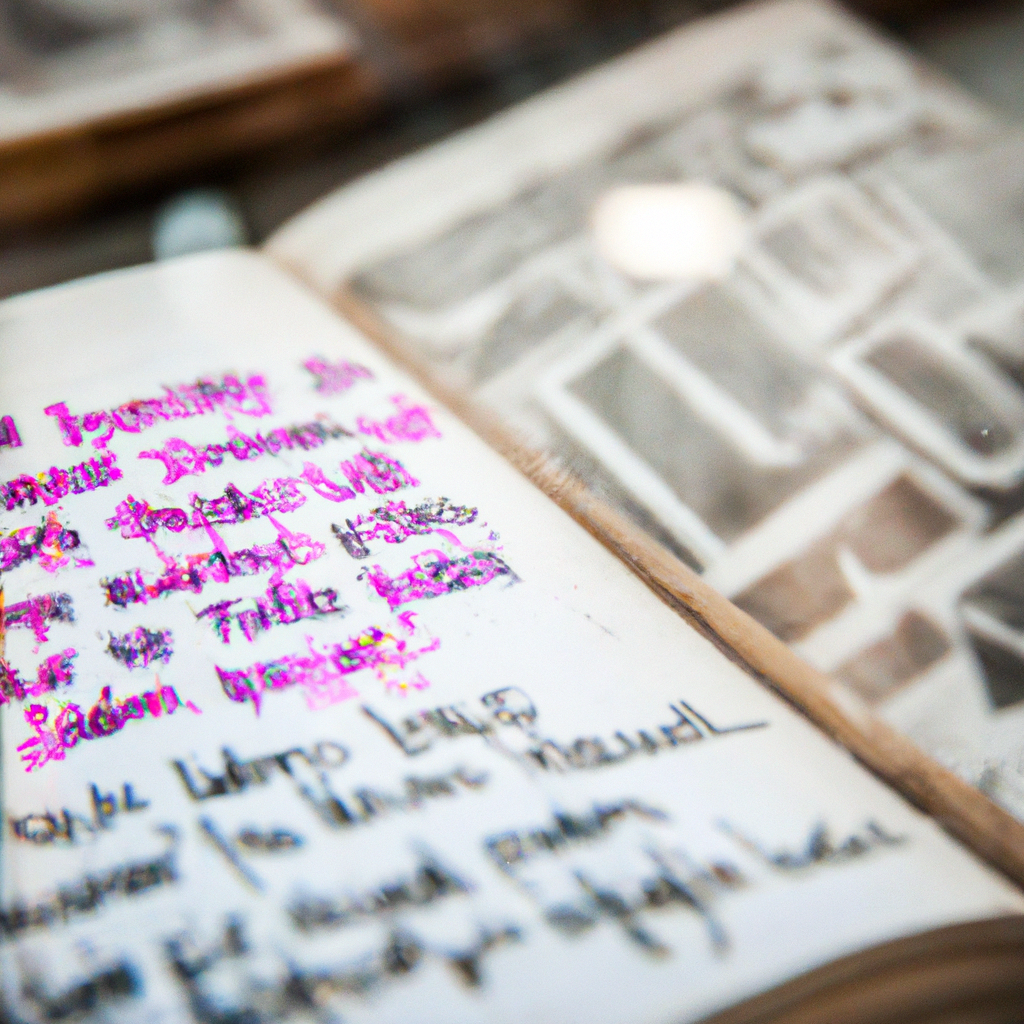As humans evolved so did their clothing, from animal hides to today’s most fashionable pieces. Throughout our journey through history, fashion has changed to fit the current era, as a reflection of where the world is at any given moment in time. In this article, we’ll take a walk through the evolution of fashion history, exploring the five distinct eras that have marked our cultural timeline. Buckle up for a journey through time – it’ll be a stylish one!
1. A Peek into the Past: The Evolution of Fashion History
Fashion is no stranger to change or transformation – its very nature requires a certain amount of evolution. Throughout the ages, fashion has undergone numerous transformations, from the early days of mummies wearing ancient tunics to the sleek and saucy silhouettes of today. As we look back throughout the years, let us take a peek into some highlights of fashion history.
- Medieval: During the early 1400s, fashion focused on long-flowing gowns for both men and women. Men would often wear bright colored tunics and cloaks for special occasions such as festivals or tournaments. Women’s fashion of the time was suffocatingly strict – with most women wearing corseted dresses with long sleeves and wore their hair loose, or in a chastity belt-style headdress.
- Renaissance: Shifts in culture and society invariably need to be reflected in fashion, and so it was that the transition from the Middle Ages to the Renaissance brought about a range of changes. Women wore long and full skirts with tightly laced corsets, a stylish silhouette that still pervades fashion today. Men’s attire reflected their rank with higher status men wearing wide-brimmed hats adorned with colorful feathers.
- Victorian: In the Victorian era, fashion changed drastically from the highly formalized garments of the past. Women wore dresses in a variety of styles, with the crinoline becoming a popular silhouette for more formal attire. Men wore sleek and tailored suits, complete with the top hat and tails.
- Modern: The 20th century ushered in a new era of fashion, with garments becoming increasingly daring, structured, and forward-thinking. Today, fashion is all about making a statement – be it through eye-catching silhouettes and materials, a bold color palette, or a combination of both.
Fashion history has seen a great deal of change and exploration throughout the years, and it is this constant evolution which has shaped the fashion we know today. As we look to the future, we can only expect more surprises and innovations.
2. From Extravagant to Exquisite: Centuries of Change
The evolution of décor and design trends over the centuries has yielded a wealth of unique and beautiful results. From its extravagant beginnings in the Medieval and Renaissance periods to its modern, exquisite form, the history of interior design tells a captivating story.
- Medieval & Renaissance Periods – Ornate décor, rich color palettes, and handcrafted furniture predominated in these eras. Tapestries, wall hangings, and decorative art added flare to the space.
- The Eighteenth Century – This period ushered in Chinoiserie-inspired designs with delicate motifs, as well as Rococo-influenced furniture and decorative pieces.
- The Nineteenth Century and Beyond – Industrialism and technological advancements steered design towards symmetry and structure. Luxury items were crafted with the use of mass production.
As centuries of décor and design have shown, interior trends can range drastically from one era to the next. But throughout its many changes, one thing is clear – interior design continues to offer unique, creative expression that has captivated and flourished over the years.
3. Rethinking Modernity: Strategies for Comparing Styles Through the Ages
An Illustration of Time-Honoured Style
As society changes and evolves, so does fashion, interior design and art. It’s natural, then, that the styles of the past can offer inspiration and insights to the designers of today. Here, we’ll look at a few different strategies for continually assessing, comparing and synthesizing styles throughout centuries of modernity.
- Reimagining Iconic Periods
- Comparative Approaches to Cultural Art
- The Backdrop of Perpetual Change
Start by revisiting classic periods of modernity from Western Europe and beyond: the classical age of Greece and Rome, the Rococo period of the 1700s, the French Belle Époque of the late 1800s. Take in the images, colors and shapes from these eras, and use them to inform a modern-day approach. From muted warm hues and delicate decorative accents to grand sweeping concepts, you can examine traditional styles with a critical eye.
Then, look closely at past and present works of art and design from different cultures and regions. Incorporate the stylistic aspects from pieces that catch your attention, and combine them in unique ways to create something new and exciting. From the bold minimalist aesthetic of Africa to the ornamentation of the Far East, it’s possible to create a global project that reflects a range of cultures.
Ultimately, discovering timeless aesthetic elements requires an understanding of the nature of change and advancement — of both societal needs and individual trends. To celebrate the most exciting elements of modernity, consider the backdrop of perpetual transformation. Each decade — even each year — brings a new batch of ideas and influences, making comparison and comparison more important today than ever before.
Fashion has definitely come a long way in the span of time, passing through history, classic styling, and modern trends along its journey. We’ve taken a fascinating walk through its passage, admiring every era of fashion for the unmistakable creativity it brings to the world. As we explore the future of fashion, may we continue to be inspired by the awe and beauty of the past.


